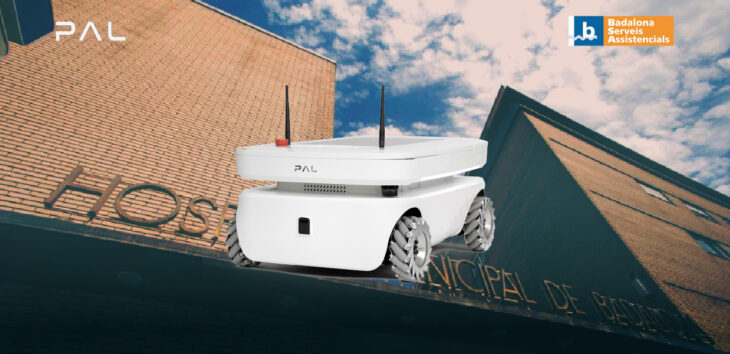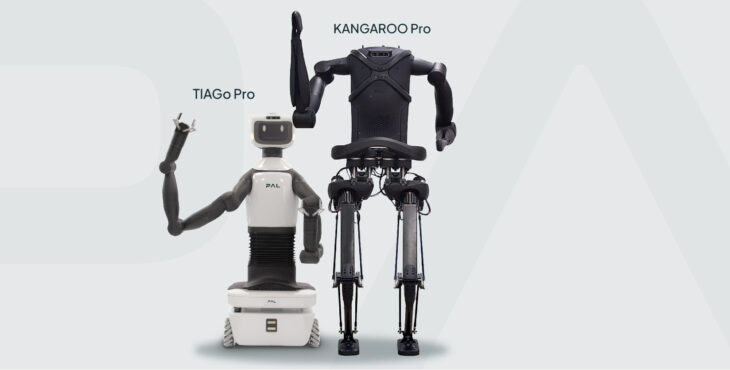The personal robotics domain is raising new challenges concerning robot behaviour and developing a level of personalisation with respect to each user’s needs and preferences. The EU project, PERSEO, that we are project partners in is based on robot personalisation and research in areas such as adapting robot behaviour to different contexts. Recently we had the chance to interview Lorenzo Ferrini, a PhD researcher at PAL Robotics focussed on the project to ask more about PERSEO and his research to date.
The challenges of personalisation and how to use robotics as a tool to connect with people on a deeper level
In introducing the project, Lorenzo told us, “PERSEO is about robot personalisation – a very broad topic in robotics. It looks at personalisation for service robots – ie robots providing a specific service for the individual. Considering all characteristics in an individual, there are many aspects that distinguish people, and taking them into account is one of the big challenges of social robotics.”
Lorenzo continued, “PERSEO is composed of 15 early-stage researchers (ESRs), some of us work in companies, the rest in academic institutions. Each one of us is carrying out our own research, but we collaborate for the project and organise workshops together.”
Lorenzo explained, “The idea we have is to develop a deeper understanding of the behavior of people, and at the same time, differences between people should not differentiate the behavior of the robot. The robot should be used as a tool, to bring about a deeper connection with people, and how to do this in the right way is the challenge.”

Developing a model for attention that can help the robot learn from observation
Lorenzo’s work in the PERSEO project has focused on developing tools that are required for robot personalisation. Firstly, he worked on understanding the physical structure of people, including their adaptive kinematic representation, which takes into account different body shapes and affects the performance of the robot.
He told us, “robots have 3D sensors that work better in some situations than others, and I’m working on developing a model that can help the robot understand the 3D position of the body and how it is facing, which is crucial for the robot to interact with people effectively.”
As well as this, Lorenzo has focussed on human action learning, telling us, “the topic of my PhD is human action learning and physical adaptation. Then I started to look at current issues in human action learning – one of the current issues is learning from observation.” Lorenzo continued, “the challenges here included how to manage gazing behaviour of a robot while the robot is learning from observation – especially while a human learner needs to focus specifically on the aspect (eg another human) to learn with its gaze – and it’s difficult to assume robot is learning if not looking at what is being done.”
He explained, “The idea is to develop a model for attention that can help the robot learn from observation.” He added, “we decided it might be an interesting challenge to model the attention of the robot in an informative way for humans. We have already started data recording to propose a model for attention, and this will be our work for the forthcoming months, including understanding better where the human looks when interacting with other humans.”
“As the next steps, we will build and train the model using machine learning with the data we are collecting; then, we will implement it on PAL Robotics’ ARI and TIAGo robots to test it.”
Lorenzo told us, “What comes next is to prove that learning from observation is enhanced by these more informative ways to pay attention. Looking at attention in humans – semantic and perceptual – we will try to model both in a combined way in robots.”
Lastly, Lorenzo added, “ROS4HRI is also a key project we have been working on for the past year, which has also been connected to my research work. ROS4HRI is a set of ROS-based modules that offer a standardised approach to build complex perception pipelines for human awareness that can be used on our social robots, ARI and TIAGo.”
Modelling attention in robots: the future of robotics
Lorenzo also highlighted the importance of modelling the visual attention of a robot for the future of social robotics, he explained, “being able to model the visual attention of a robot is important for two reasons – 1. is that it helps us understand the inner state of a robot and what it considers important, and 2. is that human visual attention has a crucial social importance for having a good social experience, this can enable interaction between humans and robots to become more fluid and natural.”
In conclusion, Lorenzo and project PERSEO are working to understand human behavior better to develop models for attention that can help robots learn from observation. Their work is important for the future of social robotics, as it can enable more natural and fluid interactions between humans and robots.
PERSEO (European Training Network on PErsonalized Robotics as SErvice Oriented applications project) for the market of personal robots
Project PERSEO (European Training Network on PErsonalized Robotics as SErvice Oriented applications project), is an EU-funded research project that aims to train a new generation of research and professional figures to face research challenges in the market of personal robots.
There is a need to develop a research community to investigate different robot capabilities for understanding and modelling interaction with humans and for adapting the robot’s behaviour to each context.
PERSEO’s research program is organized into three Research Themes aimed at investigating robot personalisation of capabilities at different levels of possible human-Robot interaction, in particular “Physical”, “Cognitive”, and “Social.” At PAL Robotics we take part in Early Stage Research training and Human Action Learning and Physical Capabilities Modelling. Overall, the project looks at user-centred design and development of novel imitation learning techniques for enhancing PAL Robotics’ ARI robot.
Partners in project PERSEO are:
- Università degli studi di Napoli Federico II
- University of Manchester
- Sheffield Hallam University
- Technische Universitaet Muenchen
- Università degli studi di modena e reggio Emilia
- Universitat Wien
- Universität Bielefeld
- Scuola superiore di studi universitari e di perfezionamento S Anna
- Ortelio ltd
- PAL Robotics
At PAL Robotics we partner in a number of collaborative projects in healthcare and ambient assisted living, as well as projects covering areas such as agri-food, smart cities, and industry 4.0, Artificial Intelligence, and Deep Learning. We are always on the lookout for new collaborations, visit PAL Robotics’ collaborative projects page to find out more and don’t hesitate to get in touch with us to discuss working together.


